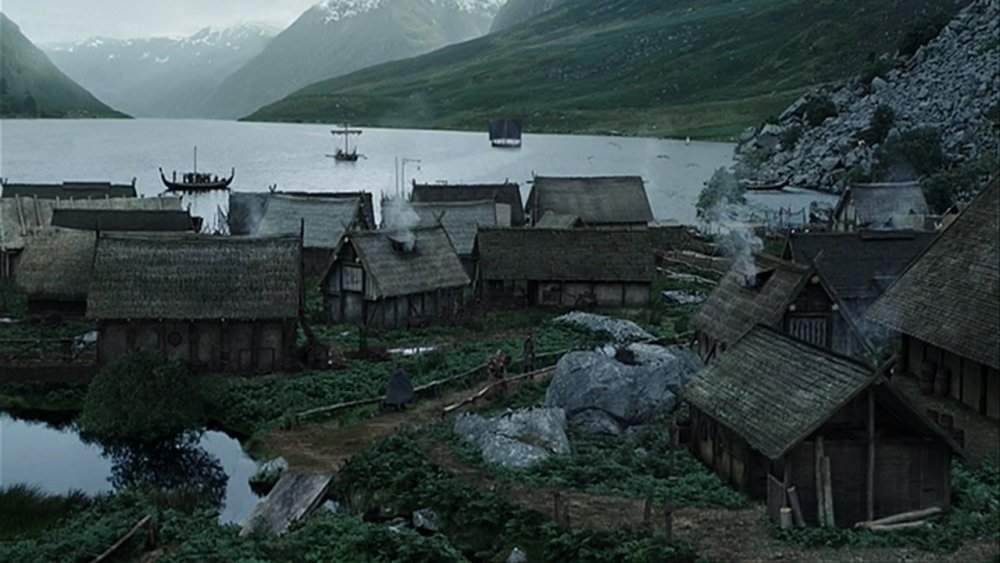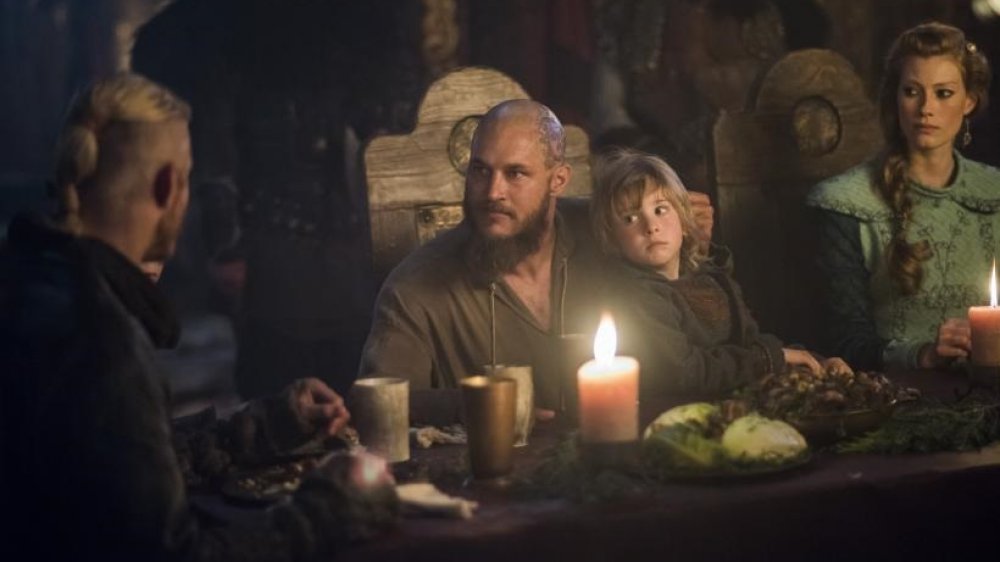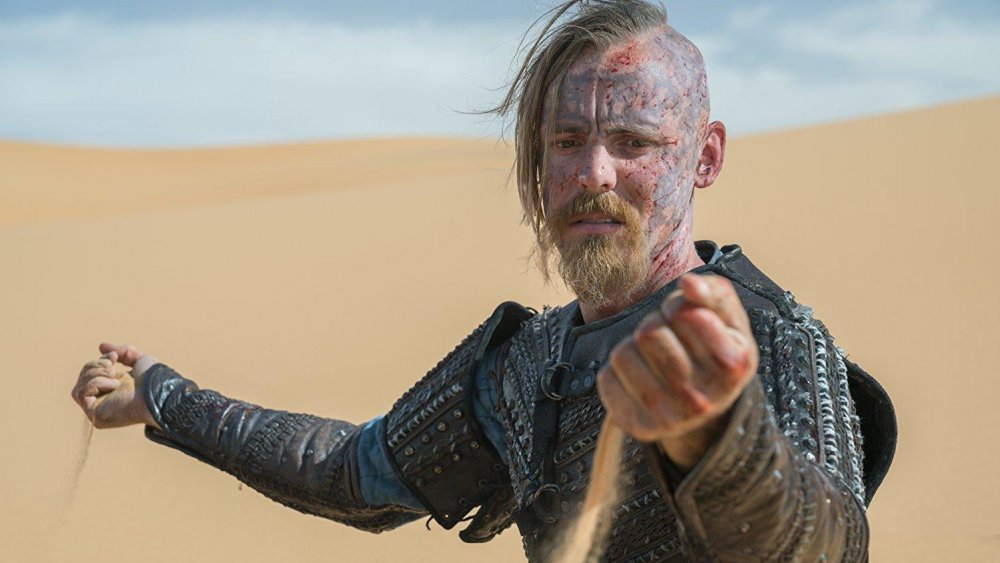The Village In Vikings That Isn't Supposed To Exist
Over six seasons of Vikings, the village of Kattegat went from bustling market town to fortified city and capital of a kingdom. If its walls could talk, they could tell stories of meetings, murders, battles, and a siege that saw the ousting of a king.
However, if you're planning a future trip to the real Kattegat, there's some disappointing news. Although Vikings is occasionally (and loosely) based on Viking legends, Kattegat is not a real Norwegian village and it never has been, as far as we can tell.
The series' departure from historical fact is simultaneously one of the best and worst things in Vikings. Creator and head writer Michael Hirst has often taken real historical figures — including Ragnar Lothbrok (Travis Fimmel) and Lagertha (Katheryn Winnick) — and combined their separate stories into one saga. He has also incorporated battles that actually happened but with different people, often decades apart. Using a fictional location has allowed Hirst to adapt the stories of the Vikings into a more dramatic narrative, without stepping on the toes of any locals.
That said, Kattegat is a real place, it's just not habitable, even for the toughest Vikings. Here's where to find the real Kattegat, and how Hirst and co created their own village on screen.
The village of Kattegat was created in Ireland
You're going to need a boat — preferably a Viking ship — to get to the real Kattegat. It's a body of water between Denmark on the West and Sweden on the East. The name comes from the Dutch for 'cat' and 'hole' or 'throat,' a reference to the narrow outlet to the sea.
Given that Vikings was not set in Atlantis, the series creators built the village of Kattegat on land rather than in the middle of its namesake. But it wasn't in Norway, it was in Ireland, where Vikings is filmed for the most part. When you see the Vikings on screen pillaging their way through Britain, France or Norway, the actors were probably in Ireland. But that's not to say they had it easy — even without Scandinavian temperatures, the Irish climate contributed to the toughest Vikings scene Katheryn Winnick had to shoot.
The Kattegat on screen was originally created at Lough Tay in County Wicklow. This small and beautiful lake is also known as the Guinness Lake — not because it's filled with Guinness (as much fun as that would be), but because part of it is on property owned by the Guinness family. However, in later seasons, the set was moved to Ashford Studios, also in County Wicklow, which is now set to host the Netflix prequel series Vikings: Valhalla.
Vikings has shot in some spectacular locations
Although Ragnar and company were infamous for traveling to (and invading) other countries, the cast and crew of Vikings were mostly based in Ireland. Even the siege of Paris in season 3 was filmed using sets built in Ashford Studios, reinforced by CGI.
However, they did get to add stamps to their passports for certain scenes. For example, some of the Paris scenes from the fourth season were filmed in Canada. And when Floki (Gustaf Skarsgård) discovers the Land of the Gods in season 5, the black beach and the waterfall that overwhelm him with their majesty really are in Iceland, the country the real-life Floki settled.
The most ambitious location shoot the Vikings creators undertook was in Morocco, for Björn (Alexander Ludwig) and Halfdan's (Jasper Pääkkönen) less-than-successful trips to Sicily and North Africa. The set of Sicily, home to the ill-fated Euphemius (Albano Jerónimo), was in Atlas Studios — the world's largest film studio — in Ouarzazate, Morocco. If it looks familiar, it might be because it was also used in Kingdom of Heaven. Other scenes were filmed in the city of Errachidia in Morocco, and in Erfoud, in the part of Morocco that is in the Sahara desert. From rain and cold to the desert heat, Vikings, like its namesake, has never done things the easy way.


